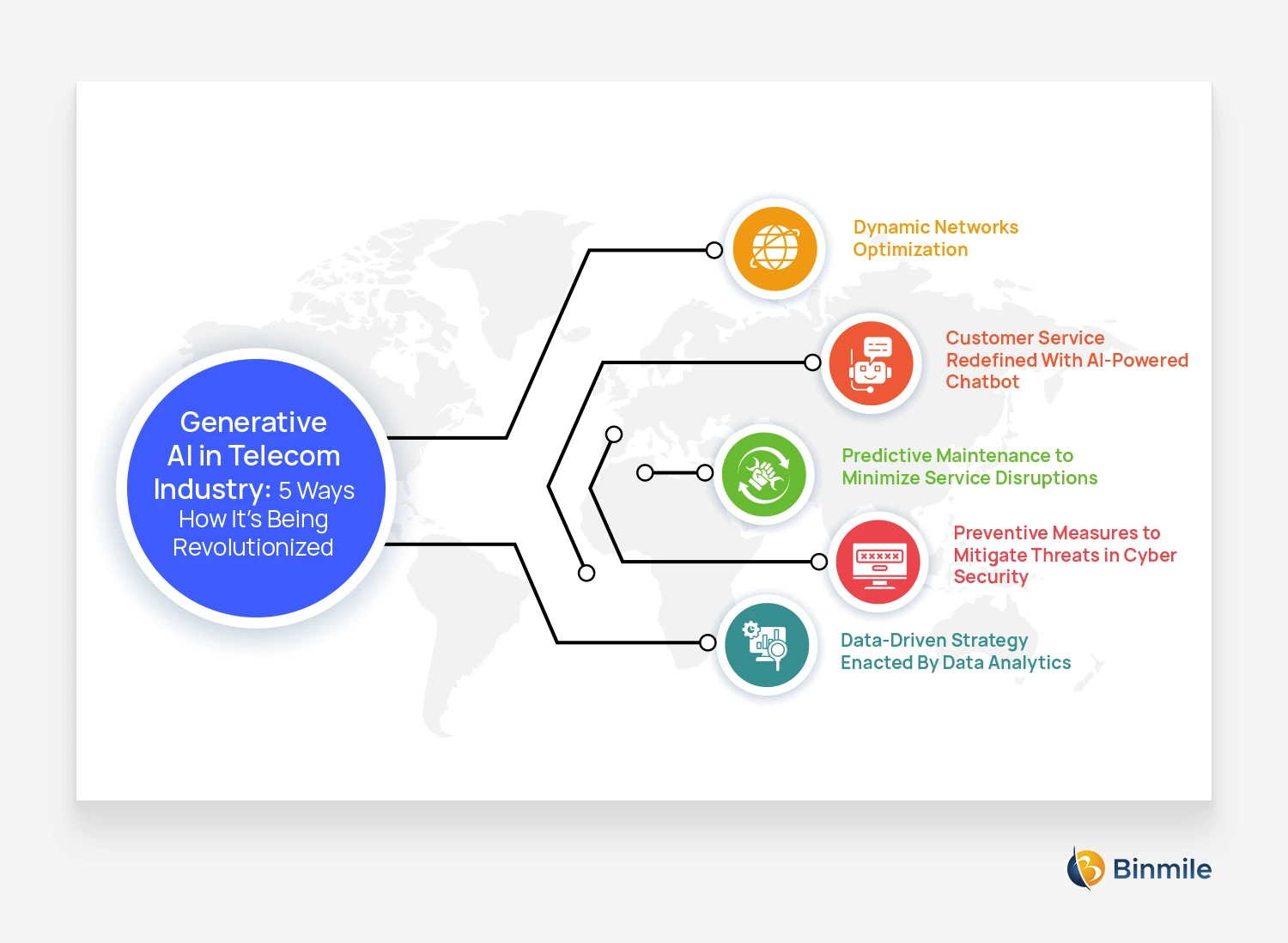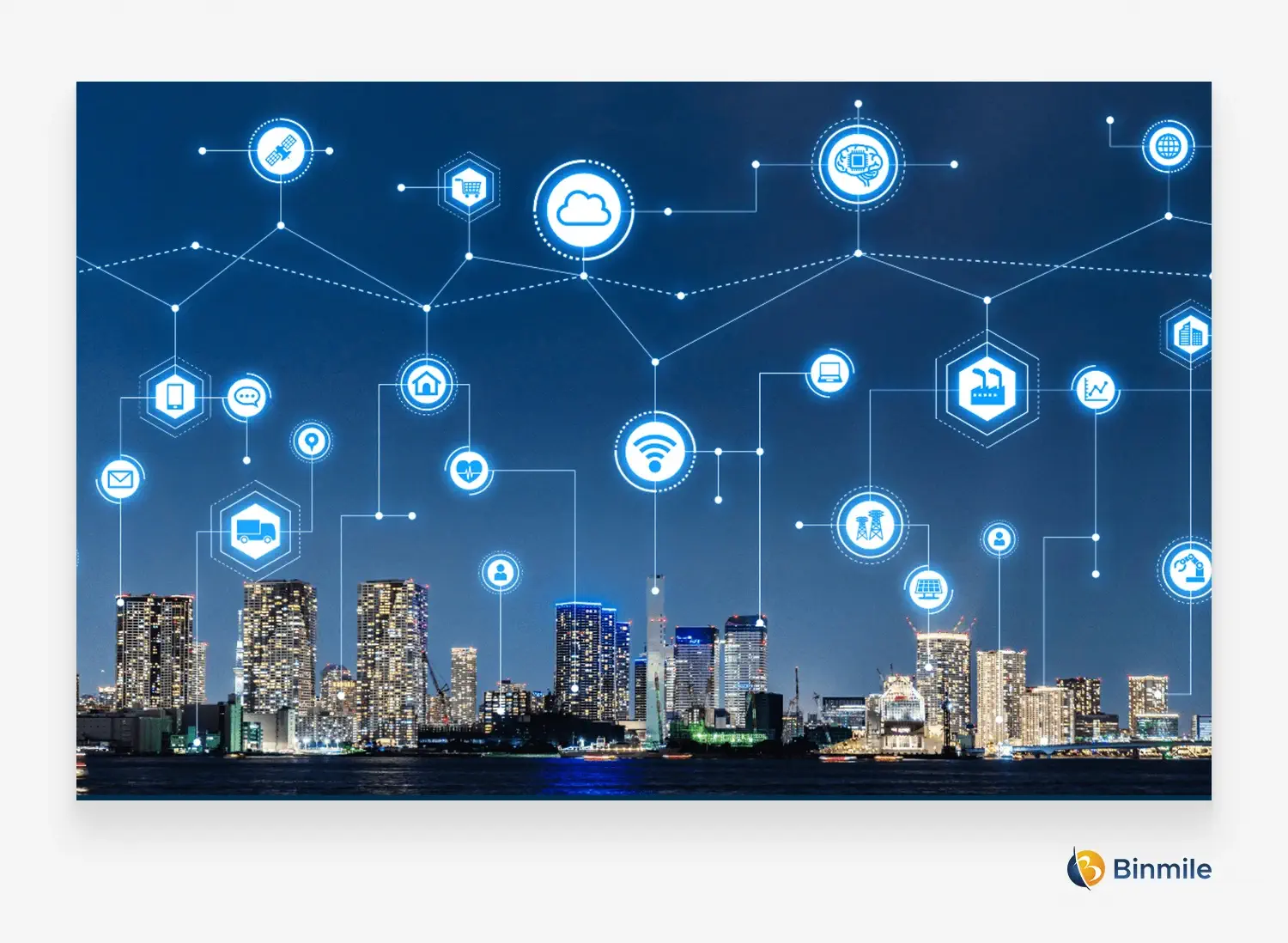The emergence of emerging technologies in the communications field, such as 5G technology, ML/Artificial Intelligence, and IoT, has brought about rapid change. However, the integration of generative AI into telecoms is enabling telecom providers to optimize operations and improve user experience. According to a recent survey, the use of GenAI in the telecommunications industry is expected to increase from 19% to 48% in the next two years. It is already established that generative artificial intelligence will transform customer care, IT and network optimization, and digital labor with AI automation tools and predictive analytics to increase agility, accuracy, and efficiency. So what role can generative AI, a powerful subset of AI, play in communications?
But first, something important. What is Generative AI in Telecommunications? Generative Artificial Intelligence is an AI technology that can create new content and ideas such as conversations, stories, images, videos, and music. Is there anything different from the AI we used previously? you may ask. And how will generative AI transform the deployment, management, operation and improvement of communications networks and businesses? If you are curious about these questions too, this blog will help you. Let’s take a look at five use cases where generative AI can have the biggest impact. This blog will also highlight generative AI trends and future prospects in the telecommunications industry.
Harnessing the Power of Generative AI in Telecommunications: Everything You Need to Know
What is generative AI and AI? Are they the same?

In the end, Generative AI is artificial intelligence, right? But it’s also more than that. General AI or traditional AI is trained on large datasets containing human input, conversations, user queries and responses, while generative AI is trained on diverse datasets to learn patterns to create content with predictive patterns. Unlike AI that follows a simple input-output process, GenAI receives input, understands it, and uses that information to create something new.
There is no doubt that the telecommunications industry is very dynamic and is constantly expanding to meet the ever-changing needs of consumers and businesses. Within this, the emergence of generative AI is expected to usher in a revolutionary trend that has the potential to redefine the landscape of communications and connectivity.
- Generative AI Use Cases in Telecommunications
- behavioral simulation
- Content Personalization
- Natural speech production
- Network Optimization
- Predictive Maintenance
- Fraud Detection
Know the difference: Artificial Intelligence and Intelligent Automation
How is this important in the telecommunications industry? We’re trying to figure it out.
Generative AI in Telecommunications: 5 Ways to Innovate




The emergence of Generative Artificial Intelligence in the telecommunications industry has ushered in an era of transformation, bringing unparalleled efficiency, customer experience, and innovation. Let’s understand how this happens by exploring five ways generative AI in telecommunications is acting as a catalyst for industry change.
#1 Dynamic Network Optimization
Leveraging generative artificial intelligence in the telecommunications industry has enabled network optimization for unparalleled efficiency. This has been brought about by machine learning and the resulting unsupervised analysis of data patterns. It also predicts and identifies potential bottlenecks and optimizes resources. Generative AI is therefore a powerful tool for independent management of networks to maximize their efficiency. This not only provides general performance, but also minimizes off-hours time, resulting in a more resilient and reliable communications infrastructure.
#2 Customer service redefined with AI-based chatbots
The adoption of generative AI-based chatbots will revolutionize the customer service space in the telecommunications sector. These smart virtual assistants instantly respond to customer inquiries based on random data. This makes it easier to delight customers and frees agents to focus on more personalized services at scale, while maintaining a balance between automation and one-on-one service.
#3 Predictive Maintenance to Minimize Service Outages
In the language of modern AI, telecom providers can unlock a truly revolutionary approach – generative AI predictive maintenance – from a reactive business to a proactive approach. This allows timely intervention by analyzing historical data for patterns that indicate possible equipment failures. This also helps minimize service downtime and reduce operational operating costs due to reactive maintenance.
Read more: How do you manage software maintenance?
#4 Preventative measures to mitigate cybersecurity threats
Since the telecommunications industry is frequently vulnerable to cyber threats, the preventive measures adopted by generative AI solutions strengthen its defenses. As cybersecurity evolves, GenAI adapts to new risks, tracking changes in customer behavior and threats. This allows telecommunications companies to not only protect but also strengthen network communication integrity and preventive measures primarily against loss of critical data of customers.
#5 Data-driven strategy implemented through data analysis
Generative Artificial Intelligence in Telecommunications provides telcos with detailed and powerful data analytics capabilities. By discovering high-value information through large data sets, AI helps to properly define growth and emerging trends on which smart decision-making processes are built. Generative AI technologies help provide the tools needed to predict future trends in the telecom market and identify innovative solutions. Thus making the telecom industry data-driven and fostering a culture of continuous improvement and adaptability.
Also read: Ethical AI Model
Impact of Generative AI on Communications: Current Trends and Future Prospects




The future of generative AI in the telecommunications industry is showing an upward trend with an estimated market size of $213.53 million in 2023. It is expected to experience a compound annual growth rate (CAGR) of 41.59% from 2023 to 2032, reaching USD 4,883.78 million in 2032. It thus reflects the growing importance and widespread acceptance of generative AI in the communications sector.
Here’s the future of Generative AI in the telecommunications industry.
- Power savings through AI can help telcos reduce carbon emissions, lower operating costs, and contribute to a more sustainable future.
- AI and IoT connectivity enable telcos to analyze and understand large data sets for improved operations and improved customer experiences.
- MLOps and No Code innovations enable telecommunications companies to not only operate efficiently, but also place them at the center of innovation and increased competitiveness.
- Optimizing mobile tower operations powered by generative AI
If you want to create a more intelligent and connected future, contact us.
Don’t miss this: Generative AI in e-commerce
closing statement
We’ve seen how generative AI in the telecommunications industry offers tremendous opportunities to not only drive change but also streamline the way we operate. From optimizing networks to transforming customer service to enhancing cybersecurity, the impact of generative AI is far-reaching. With the help of generative AI, telecom companies can not only improve operational efficiency but also redefine the core of how they engage with customers.
In this blog, we explained how the integration of generative artificial intelligence for communications is reshaping the industry and discussed what we can expect from this innovative technology. We hope this has broadened your understanding of the massive power-generating AI holdings. Additionally, as it eventually grows, we can expect to see more and more carriers adopting generative AI capabilities. The future of communications depends on those who harness the power of generative AI. This is where AI app development services companies can help you innovate, adapt, and lead in a dynamic and ever-evolving industry.


